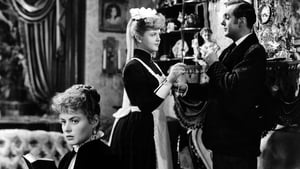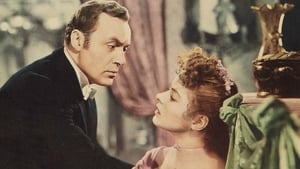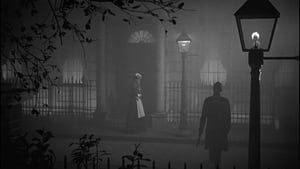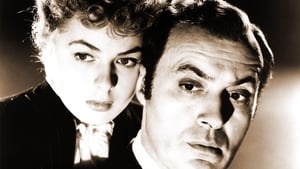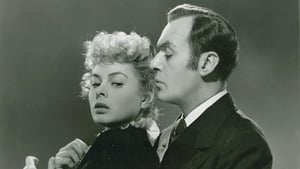Contact: [email protected]
Video Sources 0 Views
- Watch trailer
- Gaslight Colorized

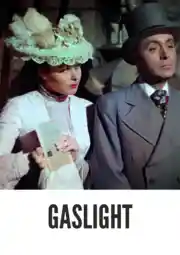
Synopsis
[ez-toc]




Introduction
In the ever-evolving landscape of cinema, where technological advancements continually reshape the way we experience stories, there’s a delicate dance between preserving the authenticity of old films and embracing innovation. Gaslight Colorized 1944, a timeless classic directed by George Cukor, finds itself at the intersection of this cinematic crossroad. In this article, we delve into the intricacies of Gaslight Colorized 1944, exploring its legacy, the impact of colorization, stellar performances, and the enduring themes that continue to captivate audiences.
Read Media File Transfer Agreement: Terms and Conditions
Read FAQ
The Legacy of Gaslight Colorized 1944 Film
Gaslight Colorized1944, a psychological thriller, stars the brilliant Ingrid Bergman, Charles Boyer, Joseph Cotten, and a young Angela Lansbury in her breakthrough role. This black-and-white gem has cemented its place in the history of cinema, earning acclaim for its gripping narrative and exceptional performances. As we embark on this exploration, it’s crucial to recognize the importance of preserving and restoring old films, ensuring that they remain accessible to audiences across generations.
Analyzing Gaslight Colorized 1944: A Visual and Aesthetic Treat
Colorization of old films has been a topic of debate within the film industry. Gaslight Colorized 1944, however, offers a unique perspective on this controversial process. The film’s original cinematography, with its stark black-and-white visuals, is a testament to the noir era. The colorized version, though, introduces a vibrant palette, breathing new life into the Gothic overtones that define the narrative. As we compare the two, it becomes evident that the colorization adds layers to the storytelling, creating an enhanced cinematic experience that resonates with modern audiences.
The Stellar Performances in Gaslight Colorized 1944
The cast of Gaslight Colorized 1944 delivers performances that transcend time. Ingrid Bergman’s portrayal of the tormented Paula Alquist earned her an Academy Award, solidifying her status as a cinematic icon. Charles Boyer’s subtle manipulation and Joseph Cotten’s steadfast support add depth to the narrative, while Angela Lansbury’s early career brilliance shines through. These performances, now preserved in color, continue to mesmerize audiences, proving that great acting knows no temporal bounds.
Soundscapes of Darkness and Suspense: The Music and Sound Design of Gaslight Colorized 1944
Beyond the visuals, Gaslight Colorized 1944 is a symphony of darkness and suspense, thanks to its musical score and sound design. The haunting melodies and carefully crafted soundscapes play a pivotal role in building tension and atmosphere, heightening the psychological narrative. In the colorized version, these elements take on new dimensions, enriching the auditory experience and pulling audiences deeper into the labyrinth of manipulation and deceit.
Gaslighting and Manipulation: Enduring Themes in Gaslight 1944 Film
Gaslight 1944’s exploration of gaslighting techniques remains relevant in contemporary society. The film’s portrayal of psychological manipulation and the unraveling of truth strikes a chord with audiences, highlighting the enduring appeal of psychological drama. As we revisit these themes in the colorized version, the emotional impact intensifies, showcasing the timelessness of Gaslight’s narrative.
The Controversy Surrounding Colorization in Film Industry
The introduction of colorization in the film industry sparked heated debates about preserving the original artistic intent of old films. Gaslight Colorized 1944 is no exception, raising questions about the delicate balance between innovation and respecting the filmmaker’s vision. Understanding the historical context and challenges involved in colorizing old films is crucial to appreciating the contentious nature of this cinematic transformation.
Restoring Gaslight: Debating the Merits of Colorized Version
Gaslight Colorized 1944 opens a window into the ongoing debate about film restoration. While purists argue for preserving the original black-and-white aesthetic, the colorized version of Gaslight introduces a fresh perspective. Evaluating the merits of this rendition requires a nuanced approach, considering how it impacts the overall viewing experience. Gaslight, in its colorized form, invites audiences to rediscover the narrative with a renewed sense of visual engagement.
The Enduring Legacy of Gaslight 1944
Gaslight 1944, in both its original and colorized versions, stands as a testament to the film’s enduring legacy. Its critical acclaim, box office success, and inclusion in the National Film Registry showcase the lasting impact it has had on the cinematic landscape. As we reflect on its journey through time, Gaslight 1944 continues to be a touchstone for filmmakers and audiences alike.
Gaslight Through the Ages: From Stage to Screen
The story of Gaslight didn’t begin with the 1944 film adaptation. Its roots trace back to the 1940 British film “Gas Light” and even further to its origins as a stage classic. Comparing these iterations reveals the evolution of storytelling approaches and the influence Gaslight 1944 has had on later films. Its status as a classic murder mystery is further solidified, illustrating how a compelling narrative can transcend mediums and captivate audiences across generations.
Preserving the Authenticity of Old Films: Balancing Restoration and Innovation
Gaslight Colorized 1944 serves as a case study in finding the delicate balance between preserving the authenticity of old films and embracing technological advancements. As we witness the transformation of this noir classic, it prompts us to consider the broader implications for the preservation of cinematic history. The colorization of Gaslight 1944 invites us to question how far we can push the boundaries of restoration without compromising the essence of the original creation.
In conclusion, Gaslight Colorized 1944 emerges not only as a visually stunning rendition of a classic but also as a catalyst for discussions on the preservation and evolution of old films. As technology continues to shape the way we experience cinema, Gaslight stands as a beacon, inviting us to navigate the delicate balance between honoring the past and embracing the future in the ever-changing landscape of film.
